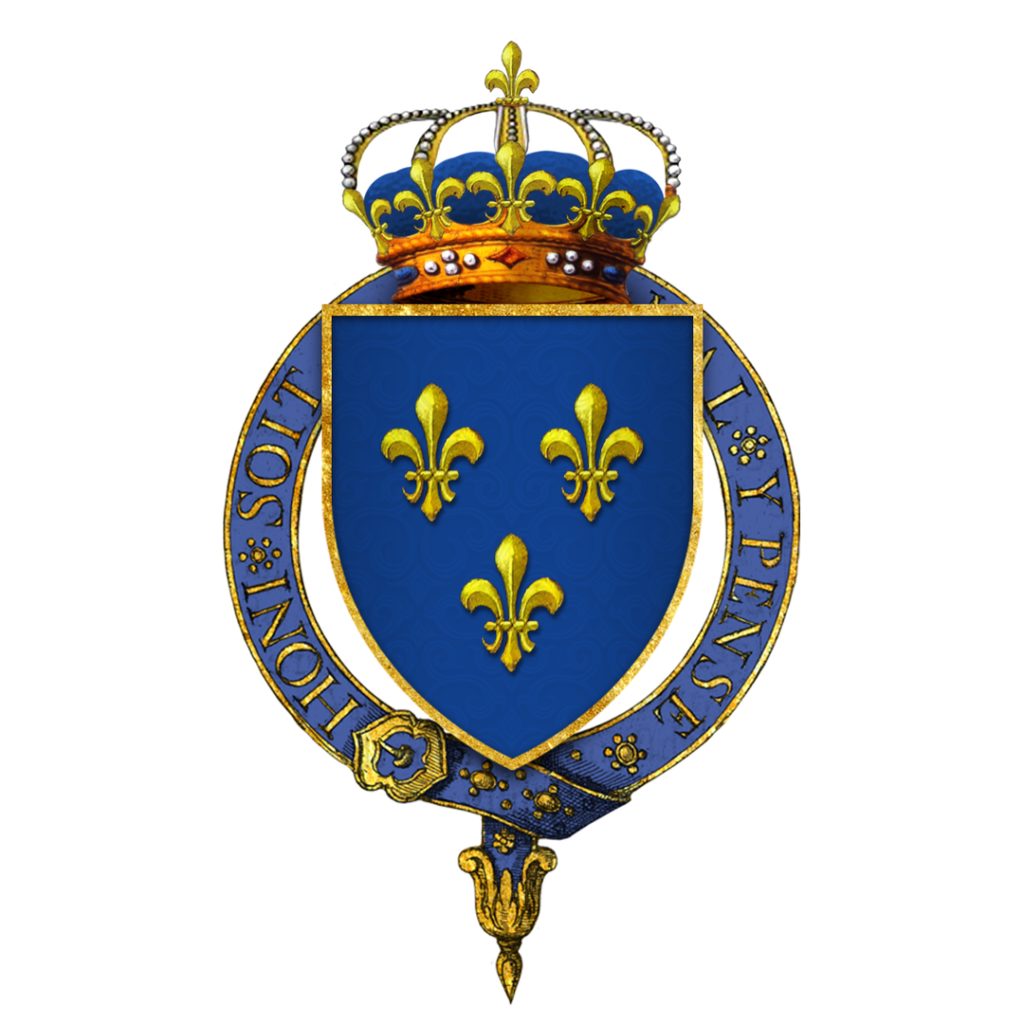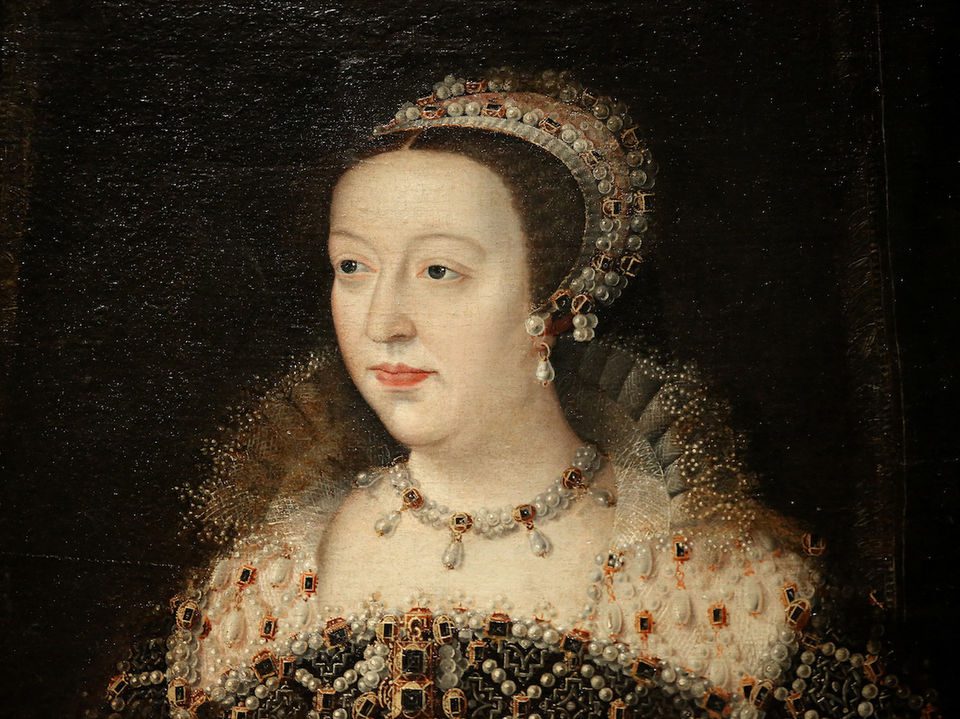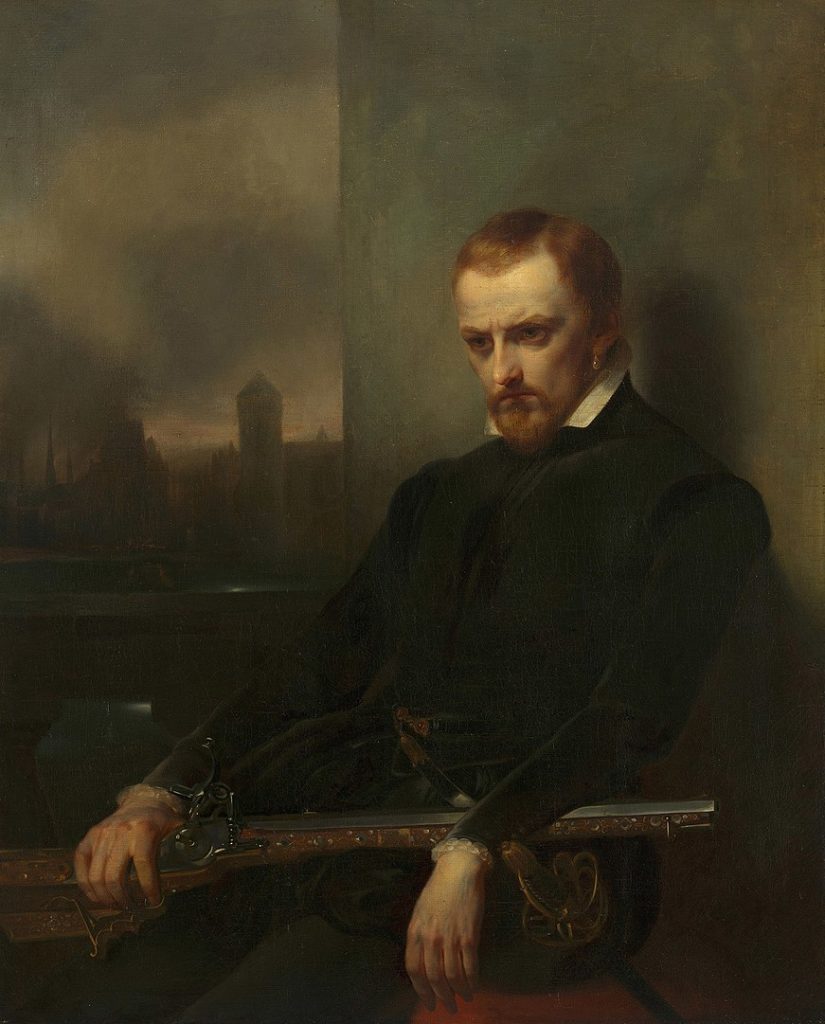
Bemberg Toulouse Foundation – Portrait of Charles IX – François Clouet photo by Didier Descouens – Wikimedia commons
Top 10 Amazing Facts about Charles IX of France
King Henry II of France and Catherine de’ Medici’s third child, Charles Maximilien of France, was born at the Château de Saint-Germain-en-Laye on June 27, 1550. He was the fifth of the royal couple’s 10 children.
He had been known as Duke of Angoulême from birth, but after the infant death of his older brother Louis, his parents second son, on October 24, 1550, he was made Duke of Orléans. Diane de Poitiers gave the governor and governess of the royal children, Claude d’Urfé and Françoise d’Humières, instructions on how to raise the royal children.
Here are the top 10 amazing facts about Charles IX of France.
1. He was designated as the duke of Angoulême since birth

King Charles IX of France photo by François Clouet – Wikimedia commons
King Henry II of France and Catherine de’ Medici welcomed Charles IX, also known as Charles Maximilian, into the world on June 27, 1550, in the royal “Chateau of Saint-Germain-en-Laye” (about 19 kilometres from Paris).
He was born as the duke of Angoulême and was the royal couple’s third son and fifth child. He succeeded to the title of duke of Orléans upon the deaths of the king’s second son and his older brother, Louis, in October 1550. Henry Carey presented him with the “Order of the Garter” on May 14, 1564.
2. He was proclaimed king at just ten years old

Francis II of France photo by François-Séraphin Delpech – Wikimedia commons
Charles’ older brother, King Francis II, succeeded his father after his death in 1559. In 1560, Francis II died. On December 5, 1560, the Privy Council proclaimed ten-year-old Charles king right away.
His mother, Catherine de’ Medici, was given broad authority as France’s governor (gouvernante de France), first serving as her son’s regent. The position of Lieutenant-General of France was given to Antoine of Bourbon, who was also the spouse of Queen Joan III of Navarre and next in line to the French throne.
3. Charles was consecrated in the cathedral at Reims

Gartered arms of Charles IX, King of France photo by Rs-nourse – Wikimedia commons
He succeeded to the throne upon the death of his elder brother, Francis II, in 1560, and was crowned King of France at the cathedral at Reims the same year.
His mother, Catherine de’ Medici, who served as regent for the ten-year-old Charles, as well as the political clout of the competing religious faction leaders, the House of Guise and the Protestant-leaning House of Bourbon, had a significant impact on politics at the time.
Antoine of Bourbon was appointed as France’s lieutenant general. He was a member of the French royal family and the husband of Queen Joan III of Navarre.
4. Charles IX declared his legal majority in August 1563
According to French tradition, Charles IX declared his legal majority in August 1563, after his 13th birthday. This put a formal end to the regency.
However, Charles was not very efficient at making decisions and remained under his mother’s domination. Charles finally came of age and took over the throne. Still, his mother continued to influence his decisions.
5. Charles and Catherine began their grand tour of France

Catherine de Medici photo by Germain Le Mannier – Wikimedia commons
Charles and Catherine started their two-year grand tour of France in March 1564. They visited cities including Lyon, Salon-de-Provence, Carcassonne, Toulouse, Bayonne, La Rochelle, and Moulins throughout their travels.
He and his brother Henry were confirmed in Toulouse. The “Edict of Roussillon,” which Charles issued in 1564, stipulated that the year would start on January 1 in all of France.
6. Charles’ rule was dominated by the French War of Religions

Charles IX of France (1550-74) on the Night of the Massacre of St Bartholomew photo by Paul Emil Jacobs – Wikimedia commons
The French War of Religions between the Calvinist Huguenots and the Catholics dominated Charles’ reign. During his reign, there was a bitter rivalry between two religious groups in France.
The “Catholic League” was headed by the “House of Guise,” whereas the Huguenots were Calvinist Protestants. Queen Catherine, the regent of France, was a Catholic, but she originally tried to strike a balance between the two groups to retain the peace.
Even before Charles IX became king, conflict had already started to develop between these two factions. Some Huguenots in Amboise planned to kidnap young King Francis II to seize control of France.
Additionally, they intended to detain Catholic nobility Francis, Duke of Guise, and Charles, Cardinal of Lorraine.
7. He was under the influence of Admiral Gaspard de Coligny

Admiral Gaspard II de Coligny photo by François Clouet – Wikimedia commons
After the Peace of Saint-Germain-en-Laye was signed in 1570, the king came under the increasing sway of Admiral Gaspard de Coligny, who had taken over as Huguenot leader from the dead Prince of Condé following the Battle of Jarnac in 1569.
However, as Coligny pursued an alliance with England and the Dutch, Catherine grew more concerned about his unfettered power.
Henry, Duke of Guise, who suspected Coligny of ordering the murder of his father Francis of Guise in 1563 while Orléans was under siege, also disliked the admiral.
8. Charles studied literature and developed a liking for writing poetry
Charles, although emotionally disturbed, was an intelligent man. His education had been entrusted to the humanist Jacques Amyot, who helped him to develop a love of literature.
He wrote poetry and work on hunting and was a patron of the Pléiade, a literary group dedicated to the advancement of French literature. Charles IX wrote a book named ‘La Chasse Royale’ that is based on the history of hounds and hunting. It was published in 1625, long after his death.
9. He died of tuberculosis in 1574

Charles IX, King of France photo by François Clouet – Wikimedia commons
The king’s frail mental and physical state significantly deteriorated following the massacre. His emotions fluctuated, ranging from gloating about the brutality of the killing to announcing that the screams of the killed Huguenots could still be heard in his ears. He alternately blamed himself and others frantically.
Charles’ pre-tuberculous health deteriorated to the point that, by the spring of 1574, his violent haemorrhage and hoarse coughs had changed to bloody ones.
At age 23, Charles IX passed away at the Château de Vincennes on May 30, 1574.
Henry, Duke of Anjou, his younger brother, was absent from France due to his recent election as King of Poland, therefore their mother Catherine assumed the regency until Henry’s return from Poland.
10. He died without any legitimate male heir
On November 26, 1570, Charles IX married Elisabeth of Austria. Marie Elisabeth of Valois, a daughter of the couple, was born. He left no legitimate male heirs when he passed away. However, he had an illegitimate son, Charles, Duke of Angoulême, from his mistress, Marie Touchet.
Planning a trip to Paris ? Get ready !
These are Amazon’s best-selling travel products that you may need for coming to Paris.
Bookstore
- The best travel book : Rick Steves – Paris 2023 – Learn more here
- Fodor’s Paris 2024 – Learn more here
Travel Gear
- Venture Pal Lightweight Backpack – Learn more here
- Samsonite Winfield 2 28″ Luggage – Learn more here
- Swig Savvy’s Stainless Steel Insulated Water Bottle – Learn more here
Check Amazon’s best-seller list for the most popular travel accessories. We sometimes read this list just to find out what new travel products people are buying.










